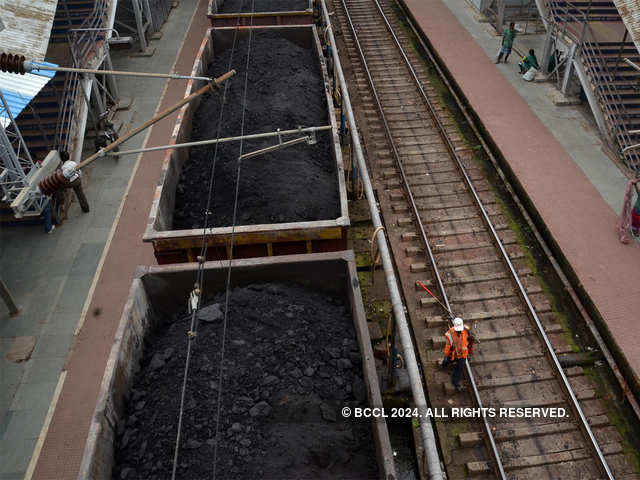👉The Karnataka Power Corporation (KPCL) has decided to go ahead with the 500 MW Bellary Thermal Power Station (BTPS) on its own, since the joint venture partner, Jindal group, has not yet committed its equity stake in the project. The project is expected to be completed by December 2005.
👉As per the original arrangement , in turn of Jindal group’s 25 per cent equity acquisition, KPCL would had to pick an equivalent stake in the expansion project of Jindal Thermal Power Project. But KPCL has not committed any equity stake in this project.
👉The Bellary thermal project cost, estimated at Rs.2,230 crore, would be funded through 80: 20 debt equity ratio. Based on the debt equity ratio, KPCL would have to infuse at least Rs.450 crore by way of equity. In the event of the Jindal group finalising its equity stake in the project, the equity would come down proportionately.
👉It may be added that the work on the Bellary project has already begun and negotiations are under way with BHEL for supply of equipment, which includes boiler as well as turbines. However, the power purchase agreement between the bulk buyer/buyers has not yet been finalised, but is expected to be taken up during the course of the next year.
👉Since the PPA has not yet been finalised, KPCL proposes to raise the project debt funding through short-term borrowings from commercial banks.
🏭ABOUT BELLARY THERMAL POWER STATION 🏭
|
| Stage | Unit Number | Installed Capacity (MW) | Date of Commissioning |
|---|---|---|---|
| 1st | 1 | 500 | 03.12.2007 |
| 2nd | 2 | 500 | 27.01.2012 |
| 3rd | 3 | 700 | Mar 2016 |

“It was also proposed that Coal India could generate 5 GW of solar power by 2023-24 and could diversify into coal gasification with a target of 50 Million Tonnes by 2030 enabling a sustainable energy mix for the country. All these ideas will be deliberated, studied and examined for their feasibility in detail and based on that, they shall be implemented,” an official statement said.
👉Joshi said various ways and means were discussed with key stakeholders to achieve One billion tonne coal production target by Coal India by 2023-24. The ministry will coordinate with Indian Railways and the shipping ministry and enable Coal India, captive and commercial miners evacuate more coal by 2030, Prahalad Joshi chaired “Chintan Shivir” - a two day brainstorming session to find a way forward for the coal sector - organised at Kevadia, Gujarat.
“The Shivir has engaged the participants in contemplating and deliberating to think out of the box to overcome various bottlenecks and provide innovative solutions to the Indian coal sector” he said speaking to the media at the sidelines of the Shivir.
👉The minister also stressed upon the safety of workers in the coal mining sector and has stressed on coal companies to achieve zero mortality rate by 2023-24.
👉The minister also stated that drilling agencies like CMPDI and GSI should benchmark their operations to global standards by digitalising their databases. This, he added, will enable better utilisation in years to come.
👉The two-day Shivir evolved strategies for sustainable mining, environmental conservation, use of clean coal technologies and extend a helping hand to all stakeholders in and around coal mining areas coexist in a mutually sustainable manner.
👉Advantages:
- The fuel used is quite cheap & available in abundant (Coal)
- Less initial cost as compared to other generating plants.
- It can be installed at any place irrespective of the existence of coal. The coal can be transported to the site of the plant by rail or road.
- It require less space as compared to Hydro power plants
- Cost of generation is less than that of diesel power plants
- Economical in initial cost compared to hydro plants and running costs are less compared to gas plants or diesel plants
- Thermal plants can be placed near load centers unlike hydro and nuclear plants. Hence transmission of power losses can be minimized
- Thermal plants are able to respond to the load demand more effectively and supports the performance of the electrical grid
- Steam plants can withstand for overload for certain extent
👉Disadvantages:
- It pollutes the atmosphere due to production of large amount of smoke and fumes
- It is costlier in running cost as compared to Hydro electric plants.
- The heated water that comes from thermal power plant has an adverse effect on the lives in the water and disturbs the ecology.
- Overall efficiency of thermal power plant is low
- The fuel is Non-Renewable Resource
- Efficiency of the plant decreases with time.
- It cannot be used as peak load plant, as its part load efficiency decreases very rapidly with decreasing load.
- Transportation of fuel is one of the major difficulties for the plants located away from coal fields.
- Life of the plant is hardly 3 to 4 decades compared with hydro-plant (1 to 2 centuries).
- Higher maintenance and operational costs
- Huge requirement of water
- Handling of coal and disposal of ash is quite difficult and requires large area
- Gestation period (period for commissioning of plant) takes long time, but less than hydro plant (Structure & Commissioning)











No comments:
Post a Comment
If you have any doubts or clarification you need in my blog topics, I would 💯 try to clear it in an efficient manner as possible. I will also accept your suggestions.